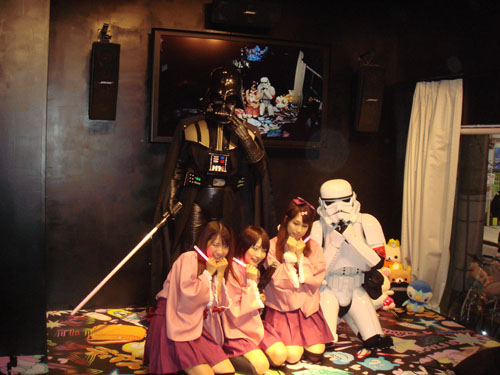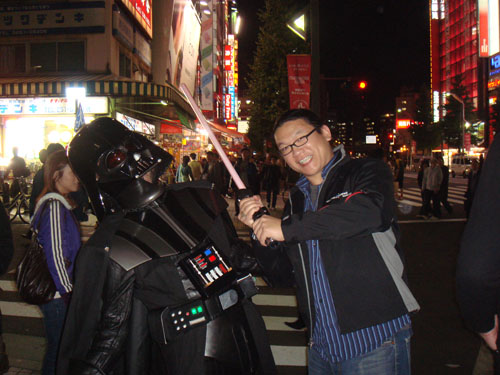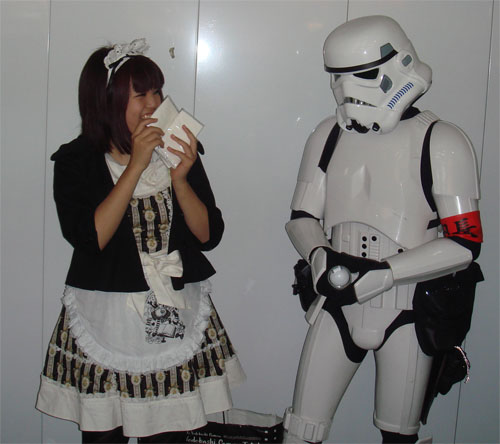Recently, I got a tour of Akihabara from Danny Choo, aka the “prince of Akihabara” (yes, for you fashionistas out there, he’s the son of Jimmy Choo). The really special part about this tour is that Danny did cosplay as a storm trooper, while his friend Hector was cosplayed as Darth Vader.

The picture above was from an otaku cafe where the Otagei masters display their moves (for those who are not familiar with Otagei, I’ll hold out for a link to BBtv’s post on this experience, still forthcoming). This cafe was a little unique in that instead of just having girls in maid outfits serve dinner to you, the girls would get on stage and dance and perform to the crowd. The crowd, in turn, danced in a very energetic sort of line-dance that complimented what was happening on stage. In fact, the line between the stage performers and the audience is quite blurry — neither could exist without the other. It was a unique experience where I got to see, and participate as an audience member, in the core of Japanese user generated content. It’s hard to find words to describe the experience — it’s somewhere inbetween a rave and a religious experience, but set in the context of manga culture. Perhaps the most accurate description I can give to it is that it’s an outlet for people with imaginative minds in a conformist culture. The best part about it is that the participants were confident of their behavior — the phrase “dance like nobody is watching” certainly applied here. According to Joi Ito, these people have risen to a keystone position in the Japanese circle of creativity. To western eyes, their behavior is extreme — as evidenced by the western audience’s hesitance to participate in the Otagei dance despite the encouragement of the dance leaders. However, I think that in a conformist culture like the Japanese, to be an individual and to express yourself as one, you need to have very thick skin and you need to be able to hold on to your convictions very strongly. Hence, westerners classify otaku as a fringe culture, but in reality they are actually cultural pioneers who are different, and by necessity they express their difference with great confidence and contrast from the mainstream culture.

I got a chance to slay Darth Vader as well :-)

…and this is what happens when a storm trooper meets a Japanese cosplay maid.
It was actually really fascinating to watch Danny go through Akihabara dressed as a storm trooper, and to see him poke the Japanese in the eye, so to speak. I think the best analogy I have for the experience is that it’s like deriving the impulse response of a black box system. In system theory, one way to characterize an unknown network of electronic circuits is to essentially hit it with a hammer and then see what comes out of the system. Based upon the residues emitted by the system you can draw many important conclusions about what must be inside the unknown network. In this case, normal Japanese society is the black box, and the cognitive dissonance of Danny walking around as a storm trooper is the impulse stimuli. Based on the response of the people, you get to see a unique side of how the Japanese mind works and thus gain some insight into the culture.


